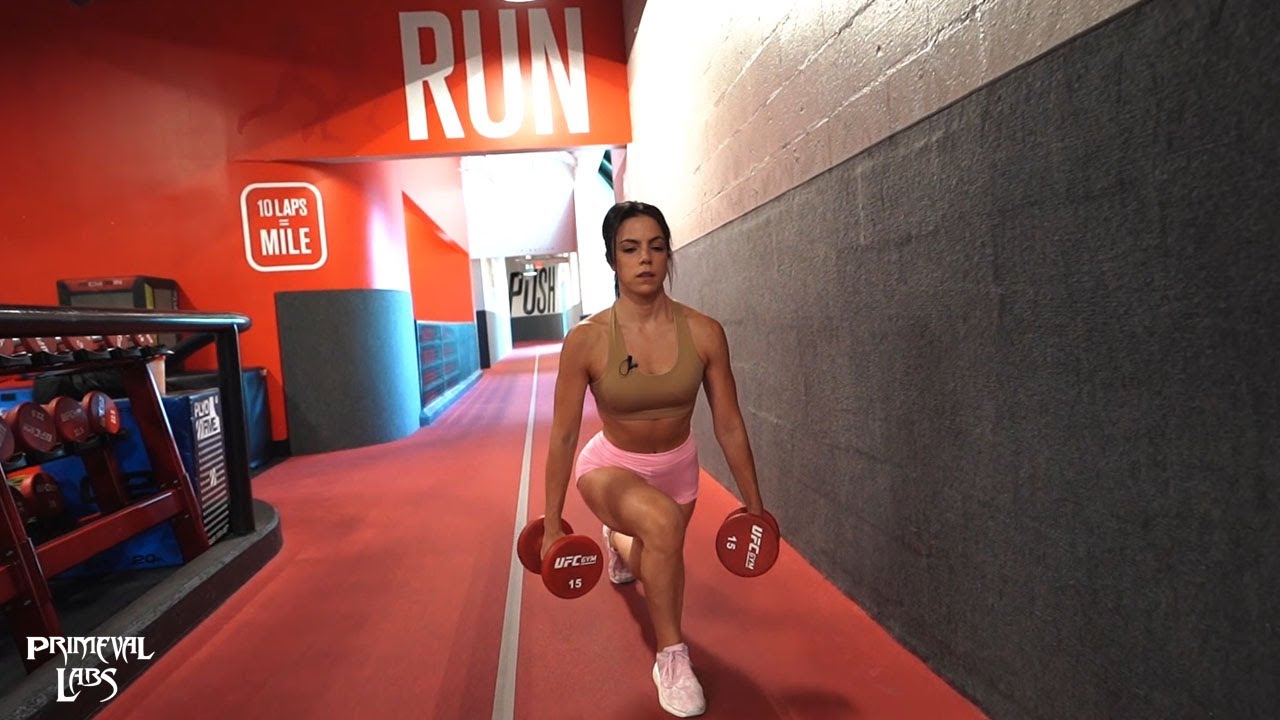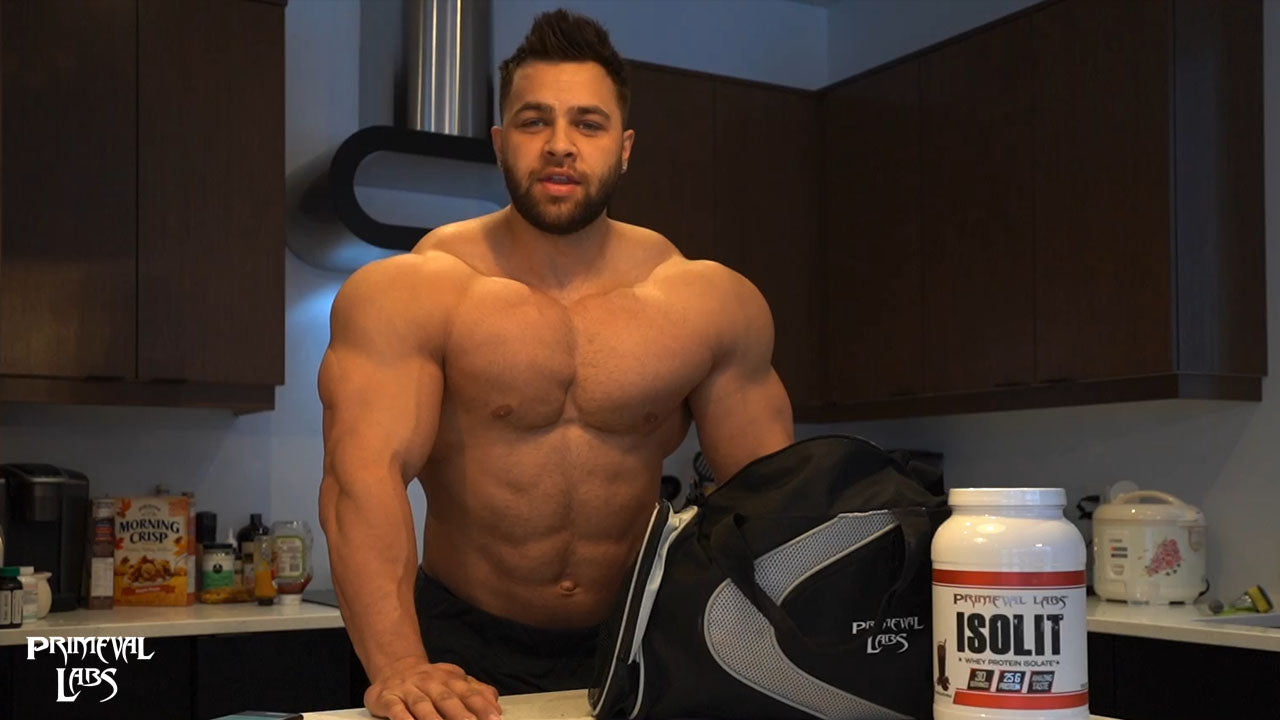Follow along as Primeval Labs athlete Alyssa Polisano takes you through her full gym leg day workout.
This is a high-volume workout designed to work the entire lower body -- hips, hams, glutes, and quads.
Here’s the workout:
Alyssa’s Pre Workout Stack
Mega Pre Red
To help her get amped up for a high volume leg day workout, Alyssa turns to Mega Pre Red.
Mega Pre Red is a delicious-tasting, high energy pre workout supplement formulated to support increased energy, focus, and performance during training.
Mega Pre Red contains research-backed doses of premium ergogenics such as L-Citrulline, Beta Alanine, and Betaine to enhance cellular hydration, endurance, and muscle pumps.
Alyssa sips on 1 scoop on her way to the gym so that when she enters the gym, she’s ready to hit the ground running.
Intracell
Intracell is an ultra-premium Intra workout supplement containing a complementary mix of fast-digesting carbohydrates, essential amino acids, hydration aids, and blood flow support agents.
The collection of performance-boosting nutrients helps combat fatigue and sustain performance during intense workouts.
Alyssa sips on Intracell 7 Black during the workout to help keep energy levels high during the workout, support athletic performance, and promote blood flow.
Alyssa Polisano Full Gym Leg Day Workout
|
Exercise |
Sets |
Reps |
|
Squats |
2 warm-ups, 3 work sets |
10 |
|
Stiff Leg Deadlifts |
4 |
10 |
|
Lunges |
4 |
12-15 / leg |
|
Hip Thrusts |
4 |
10-15 |
|
Sissy Squats |
4 |
15 |
*Indicates number of reps per leg for each set
Leg Day Workout Training Tips
Squats
Squats for the backbone of many great leg day workouts, and Alyssa’s is no different.
Prior to her working sets, Alyssa performs 2 warm up sets using an empty bar to grease the movement pattern, increase blood flow, and prepare her joints, ligaments, and connective tissue for the heavier work to come.
Alyssa prefers performing high-bar back squats, which helps focus more on the quads and glutes. If you struggle with the bar riding up too high on your shoulders or neck with high-bar squats, take some time to figure out where the bar feels the most comfortably across your traps/upper back based on your anatomy.
Barbell squatting is highly individual, and no two lifters really squat the same due to inter-individual differences in biomechanics, anatomy, and anthropometry. Some individuals might prefer high-bar squats to low-bar squats, or vice versa.
Additionally, some people just may not be built to squat with a bar on their back, but can do just fine with front squats or goblet squats.
Find the squat variation that works best for your body and your performance goals and get after it!
Stiff Leg Deadlifts
After blasting the quads with squats, Alyssa moves next to an exercise that targets the glutes and hamstrings -- dumbbell stiff leg deadlifts.
When performing stiff-leg deadlifts, make sure to keep the pressure in your heels as you lower the dumbbells to the ground. This helps keep you rooted into the ground as you hinge backward. Allowing the heels to come off the ground increases the chance for your low back rounding, which increases injury risk. It also makes you more likely to lose your balance and fall forward.
In addition to pressing through the heels, you can also elevate your toes on two small 5 or 10-pound weight plates to increase the stress on the glutes and hamstrings.
Focus on the eccentric portion of the exercise by taking a full three seconds to lower the weights to the ground.
Dumbbell Walking Lunges
Lunges are a great exercise for the entire lower body as they hit the hips, hamstrings, glutes, and quads. They also provide tremendous benefit for those looking to improve overall athleticism as walking lunges challenge your balance, coordination, strength, explosiveness and ability to decelerate
Lunges can also be varied depending on which muscle groups you want to emphasize with the movement. If you want to make the lunge more quad development, use a shorter step, and if you want to focus more on the hamstring and glute, use a longer stride.
Now, it’s common for people with a history of knee issues to experience discomfort with walking lunges due to the forward sheer that is placed on the knee joint with the movement. If walking lunges bother your knees, consider replacing them with alternating reverse lunges.
Hip Thrusts
While the barbell hip thrust variation is more commonly seen in leg day workouts, for today’s session, Alyssa opts for a machine hip thrust variation. The benefit of the machine is that it’s easier to set up than the barbell hip thrust and requires less stabilization and balance, which allows you to focus entirely on using the glutes to do the work.
As we mentioned with the stiff-leg deadlifts, make sure you’re pushing through the heels on this exercise to focus on the glutes and hamstrings.
At the top of each rep, hold the peak contraction for a solid count.
Additionally, make sure to brace your core and do not hyperextend the lower back at the top of the movement, which is a common mistake many people make when performing hip thrust variation.
Sissy Squats
Traditional sissy squats have you holding onto a power rack or other stable structure for balance while you perform the exercise. Alyssa performs a variation of a sissy squat that is akin to performing pulsing Zercher squats using an EZ bar attached to a cable column.
The EZ bar-cable column set up serves three purposes:
- The downward forward pull of the cable allows you to sit back into the squat and maintain a more vertical torso, which helps shift more tension on to your quads
- The cable column also serves as a counter balance allowing you to focus more on working the legs and less on balance and stability
- The use of the weight stack on the cable column also allow you to easily increase or decrease the intensity of the exercise depending on your strength levels. Traditional, sissy squats typically involve only bodyweight, and if you lack the strength, balance, or coordination to perform them, it can be difficult to easily regress or progress the movement.
As you noticed in the workout video, Alyssa doesn’t fully lockout at the top of each rep. This keeps constant tension on the muscles, creating more metabolic stress -- which is one of the three mechanisms of hypertrophy (a.k.a. muscle growth).













Leave a comment
This site is protected by hCaptcha and the hCaptcha Privacy Policy and Terms of Service apply.